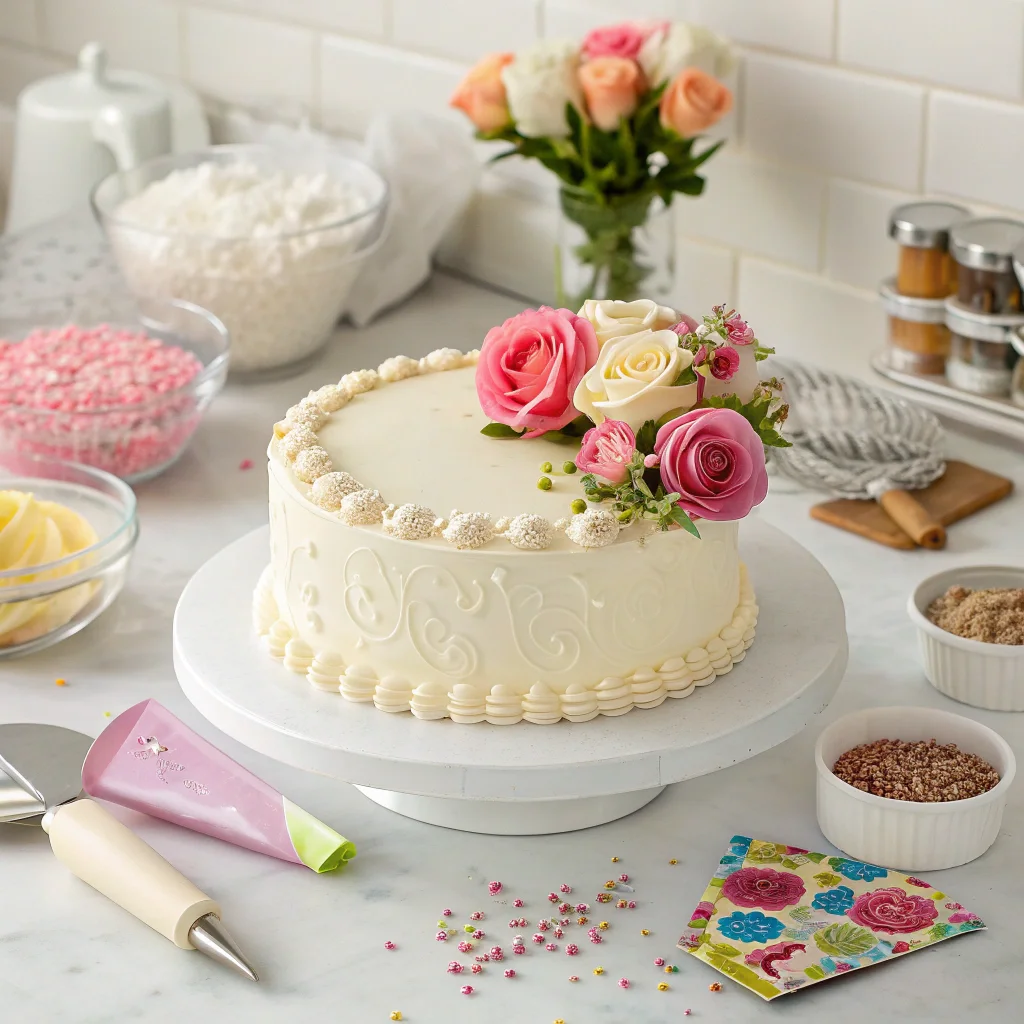Introduction
When Ella Chef first discovered the world of cake decorating, she was fascinated by how a simple cake could transform into an edible work of art. From birthdays to weddings, every occasion seemed more joyful with a beautifully decorated cake. Ella remembers her early days experimenting with buttercream swirls, fondant shapes, and colorful sprinkles, often making a mess in the kitchen but loving every second of the creative process. Over the years, she learned that cake decorating is not just about aesthetics but also about expressing love, care, and imagination through food. Today, she shares her passion with others.

Cake Decorating Basics
Ingredients
Equipment
Method
- Prepare your cake by baking and cooling it completely before decorating.
- Apply a crumb coat with a thin layer of buttercream and chill for 20 minutes.
- Add a thicker, even layer of buttercream using a spatula and smooth it out.
- Use piping bags fitted with tips to create borders, flowers, or swirls.
- Add fondant decorations, sprinkles, or a cake topper as desired.
Nutrition
Notes
How to Decorate a Cake
Cake decorating begins with preparation. First, bake your cake layers and allow them to cool completely—never attempt to decorate a warm cake, as the frosting will melt. Once cooled, apply a “crumb coat,” which is a thin layer of buttercream that seals in loose crumbs. Chill the cake for about 20 minutes to set the base.
Next, spread a thicker, smoother layer of buttercream using an offset spatula while rotating the cake on a turntable. This ensures an even finish. For beginners, sticking to smooth sides and simple swirls is a good start, while advanced decorators can attempt textured patterns or ombré effects.
Piping bags are essential for details. Use different tips to create borders, rosettes, or intricate lace-like designs. Fondant can be rolled out and shaped into flowers, bows, or even entire coverings for a polished, professional look. Sprinkles, edible pearls, and chocolate shavings add texture and fun, while fresh flowers or custom cake toppers make a bold statement.
Decorating requires patience and practice. Start simple, gain confidence, and experiment with color palettes and themes to match the occasion. Whether it’s a child’s birthday cake covered in rainbow sprinkles or a wedding cake adorned with elegant fondant roses, the key is to enjoy the process. Cake decorating is not just about aesthetics—it’s about creating a dessert that sparks joy and leaves lasting memories.
Conclusion
Cake decorating is both an art and a skill, blending creativity with culinary technique. As Ella Chef emphasizes, anyone can learn the basics with practice and the right tools. The journey may begin with uneven swirls or fondant mishaps, but each attempt builds confidence and artistry. From rustic charm to elegant sophistication, decorated cakes tell stories and celebrate milestones. Whether you’re a home baker or an aspiring professional, the act of transforming a simple cake into a centerpiece is deeply rewarding. Embrace the process, have fun, and let your imagination shine through every design.
